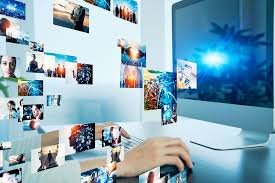I’ve tested several AI photo editing features to see if they’re worth using in my editing workflow. Some, like noise reduction, are great. But others? Not so much. Based on my experience, I’ll share which AI editing tools I find the most useless.
Sky replacement
Many AI tools will let you replace the sky, but I’ve never understood what it means. While I’m more than happy to edit my photos, I avoid manipulating aspects that change the overall mood; changing from a gray sky to blue is one of them.
Sky replacement almost always looks fake, and I don’t think they look very good either. If you’re just editing your photos for fun, go ahead – but I personally don’t think it’s a good idea to use sky replacement for anything more than that.
I will say, however, that using AI to detect the sky in your image – before then adjusting brightness and other things – is a very useful tool. It changes the sky, sure – but the overall look and feel is still there. At the end of the day, it’s all about understanding when creative software needs AI and when it doesn’t.
Brightening skin and eyes
The whole purpose of AI in any software is to simplify your workflow, and from personal experience, I’ve never found skin and eye brightening tools that do that. It’s almost always wrong, and it would have been faster to make the adjustments myself. The only exception here is if I’m using the auto button in my editing software, but even then, it’s hit-and-miss.
If you’re going to use AI while editing, I’d recommend using the retouching tools in Photoshop and similar apps. But when it comes to using it for most editing solutions, it’s better to leave it alone in my opinion.
If you want to see how AI retouching compares to manual, consider looking at what happened when I used AI to retouch my photos.
AI Blur
One of the first AI tools I tried was AI Blur, and to be honest, I would rather change the aperture on my camera. Most of the time, any kind of blurring looks obvious when done in post-production. Perhaps an argument could be that I’m not very good at it, but my photos look fine without it, so I don’t care.
AI Blurring can be useful if the tool you use is good at detecting backgrounds, but that’s not always the case. If you don’t have a professional camera, there are a number of things you can do to make the background of your image look blurry (like moving closer to your subject).
Enlarging body parts
Some AI tools let you change the shape of people’s bodies, but this is something I’m strongly against for a number of reasons. First and foremost, this is another editing technique that I think would be easy to do yourself. But other than that, I don’t agree with manipulating your body parts to make them look different.
In my opinion, if you use these features and then post them online, it’s deceptive. You could argue that editing pictures is the same thing, but I disagree. Aside from moving closer or further away from the subject and using lighting, the shape of the person still stays the same if you’re editing lighting and colors. Changing the shape of a person goes much further than that.
If you’re going to do this, you should keep in mind that in some countries you may need to mark your images as being retouched. For example, Norway has a photo retouching law where you have to state that you’ve changed the shape, skin, and other aspects.
You can always retweet my thoughts if you find these tools useful. But for me, none of these AI photo editing features are particularly relevant. I’m always open to trying new techniques, but if they don’t work, I’m also happy to abandon them and use what already works.
